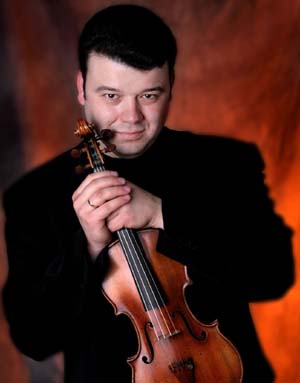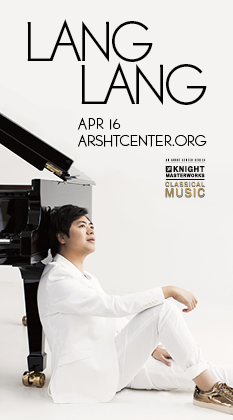Violinist Gluzman brings back the glory days of 19th-century Russian virtuosity

Vadim Gluzman performed a recital of mostly Russian music Sunday afternoon at Gusman Concert Hall.
Vadim Gluzman walked on stage Sunday carrying a 1690 Stradivarius violin that had belonged to the great St. Petersburg Conservatory teacher and violinist Leopold Auer.
Performing on the instrument of the teacher of Jascha Heifetz, Mischa Elman and other great violinists of the first half of the 20th century was appropriate for Gluzman, an old-fashioned violinist in the best sense of the term. The young Israeli favors the heavy bow pressure and throaty sound of the Russian school of violin playing, and his style on stage was passionate and dramatic, a throwback to the era of the old-time virtuosos.
His program at the University of Miami’s Gusman Hall was mostly Russian — Tchaikovsky, Prokofiev, Stravinsky and Shostakovich, with a nod toward Bach at the beginning and some fireworks at the end by Henryk Wieniawski, a Polish violinist who had preceded Auer on the faculty at St. Petersburg.
Gluzman, who appeared on the Sunday Afternoons of Music series, opened with Bach’s Partita in E Major, which proved the least successful performance of the program. The famous opening Preludio lacked shape and dignity, coming off as a blur of notes. The Gavotte fared better, and the concluding Gigue displayed more vigor and style than the previous movements.
But it was not until he moved on to the next work, Prokofiev’s Violin Sonata No. 2, that Gluzman seemed to hit his stride, seeming more at home in the idiom of the 20th century Russian composer.
His control of the bow was phenomenal, even among concert violinists, and the variety of sounds he drew from the Strad was astonishing. The second movement Presto was particularly effective, as Gluzman — a demonstrative player who stamped his foot as his bow hit the strings — snapped off Prokofiev’s rapid notes with a crisp intensity that gave the movement a hard-driving power.
Accompanying him on the piano was his wife Angela Yoffe, who displayed no trace of the diffidence that often comes over pianists in violin recitals, particularly in the Prokofiev, where her assertive style was a big part of the performance’s success.
Stravinsky’s Suite Italienne showed Gluzman’s skill extended to the less passionate demands of the neoclassical style. He played the square rhythms of the Gavotta in an assertive manner, and his amazing bow control again served him well in the concluding Minuetto e Finale. Here he played the chords with lots of character — just enough crunch to give bite to the playing without turning it into noise — and bounced his bow along the strings to draw needle-like sounds from the instrument.
Before launching into Tchaikovsky’s Meditation, he passed on a bit of lore about its composition. “Tchaikovsky wrote this piece for the owner of this violin,” he told the audience, holding up his Strad. “Very likely this piece was premiered on this violin, although we don’t know for sure.”
He performed the work in the throbbing romantic style it seemed to demand, drawing particularly lush sounds in the upper notes of the highest string, where many violins and violinists falter.
He ended with Wieniawski’s Faust Fantasy, based on themes from the Gounod opera, a dazzling display piece that allowed Gluzman to show remarkable speed, as well as such violin circus tricks as artificial harmonics and up-bow staccato.
The instrumental acrobatics won a sustained standing ovation from the audience, and Gluzman responded with an encore, the Polka from Shostakovich’s Jazz Suite No. 1.
Posted in Performances
One Response to “Violinist Gluzman brings back the glory days of 19th-century Russian virtuosity”
Leave a Comment
Mon May 16, 2011
at 1:20 pm
1 Comment






Posted May 17, 2011 at 3:08 pm by hubert
One of the best performances of the year!
I agree completely re the first section of the Bach. It was played so fast that it made me nervous and I did not enjoy it. I am sure that Bach did not intend that speed.